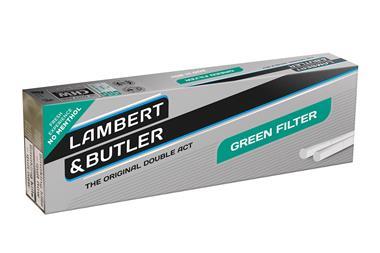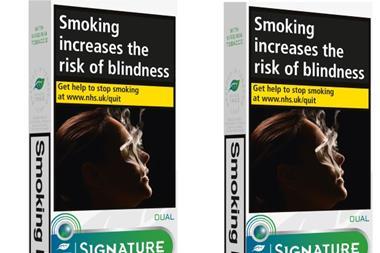Five nail-biting months after legislation outlawing tobacco displays was passed by MPs, the government has finally set out its vision of how a ban will look in England and Wales.
While most still believe the ban is a disproportionate and untested reaction to a complex problem, and that it will impose both installation and operational costs, the picture for small stores is not quite as grim as it could have been.
There is some concession on the 'permitted display area' the amount of gantry space that can be seen while a retailer is restocking or retrieving a product.
The amount of time that a gantry door can be open for will be "as long as is necessary to retrieve the product" and retailers can restock during business hours. But there are no exceptions for cleaning, maintenance or transportation, which will presumably have to be done outside opening hours.
The size of 'on display' lists has been doubled from the proposed A4 to A3, to allow retailers to list their full ranges, but words such as 'special offer' or 'reduction' will be banned.
The real operational burden comes in preventing the offence of 'display to under 18s'. A retailer needs to be certain a person is over 18 by asking for proof of age even before they can show them a tobacco product. Till prompts which appear when the item is scanned will be too late.
So, after all the fuss, gantries will remain and cigarette packs will still be seen in homes, in cars and on the street. We have a weak regulation based on weak evidence and it's retailers who must fund the structural and operational changes.
Fortunately, there is still a chance to overturn the ban. The Conservatives have promised to review the issue should they come to power. They agree that there is no convincing evidence of a ban's effectiveness and we'll be reminding them, and all the other parties, of this in the coming weeks.
While most still believe the ban is a disproportionate and untested reaction to a complex problem, and that it will impose both installation and operational costs, the picture for small stores is not quite as grim as it could have been.
There is some concession on the 'permitted display area' the amount of gantry space that can be seen while a retailer is restocking or retrieving a product.
What you can do
With the general election looming, the major political parties will soon be out canvassing for your vote.
- Tell the candidates how the display ban will affect the running of your store
- Get them behind the shop counter for a few minutes to experience a bit of what the life of a responsible retailer is really like
- Show them what measures you are already taking to prevent tobacco getting into the hands of under-18s without the need for costly and disruptive legislation.
Under the amended rules, a typical convenience store gantry of 2m x 1.5m will now only need to be fitted with four doors, rather than the 20 required in the original proposal. This should mean lower installation costs, and should be easier for retailers to work with. With the general election looming, the major political parties will soon be out canvassing for your vote.
- Tell the candidates how the display ban will affect the running of your store
- Get them behind the shop counter for a few minutes to experience a bit of what the life of a responsible retailer is really like
- Show them what measures you are already taking to prevent tobacco getting into the hands of under-18s without the need for costly and disruptive legislation.
The amount of time that a gantry door can be open for will be "as long as is necessary to retrieve the product" and retailers can restock during business hours. But there are no exceptions for cleaning, maintenance or transportation, which will presumably have to be done outside opening hours.
The size of 'on display' lists has been doubled from the proposed A4 to A3, to allow retailers to list their full ranges, but words such as 'special offer' or 'reduction' will be banned.
The real operational burden comes in preventing the offence of 'display to under 18s'. A retailer needs to be certain a person is over 18 by asking for proof of age even before they can show them a tobacco product. Till prompts which appear when the item is scanned will be too late.
So, after all the fuss, gantries will remain and cigarette packs will still be seen in homes, in cars and on the street. We have a weak regulation based on weak evidence and it's retailers who must fund the structural and operational changes.
Fortunately, there is still a chance to overturn the ban. The Conservatives have promised to review the issue should they come to power. They agree that there is no convincing evidence of a ban's effectiveness and we'll be reminding them, and all the other parties, of this in the coming weeks.
























No comments yet